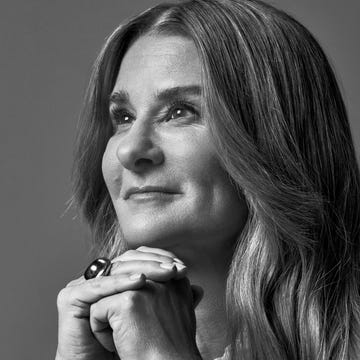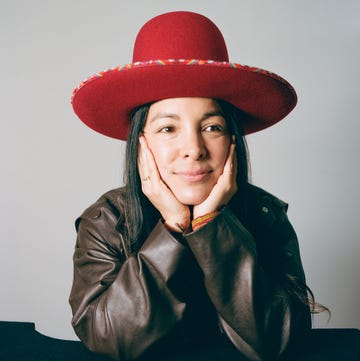One night, after a day spent photographing Indigenous corn farmers high up in the Andes mountains, Matika Wilbur was visited by her grandmother in a dream."Oh, sweetheart," her grandmother, who died when Wilbur was 11 said, "What are you doing here working with these people, when you haven't even worked with your own? Go home. Help your people. Be who you were born to be."
Wilbur was interning for a nonprofit in South America—thousands of miles away from her family’s land on the Swinomish Reservation, a Native American community of 2,500 just north of Seattle. She awoke with a start and began to cry. "That's a really strong statement in Indian country... 'Be who you were born to be,' " Wilbur, now 35, says. "We're not born into this world without purpose... I knew I needed to go home."
Back stateside, Wilbur began seeking out elders from the Swinomish community, where her grandmother, Laura "Ad-ul-tsa" Wilbur, had been a prominent leader. She took their pictures and recorded their stories. She also connected with elders from the Tulalip community (her father's tribe) and the Puyallup Tribe, both in Washington State.
At the time, Wilbur was also teaching photography at the Tulalip heritage school and at Northwest Indian College. While building curriculum for class, she discovered a serious lack of images of Native Americans taken by Native Americans. That void inspired her to launch Project 562, a Kickstarter-funded pursuit to photograph every federally recognized Native American tribe. The ambitious project’s name came from the number of then-recognized tribes. It has since risen to 573, according to the U.S. Department of the Interior.
In November 2012, she sold everything in her apartment and set out in an RV she called "Big Girl." For nearly seven years now she's traveled the country sleeping on couches and relying on speaking engagements for food money and to pay her small staff. She's captured thousands of portraits from over 400 tribal nations so far, all with the goal of challenging stereotypes and shifting the consciousnesses of contemporary Native America. "Each of us, as citizens, has a responsibility to change that narrative within ourselves," Wilbur says. "To seek new information and to build relationships with the Indigenous people of the territories we're occupying."
On shoots, Wilbur asks her subjects about identity, race, racism, and blood quantum, the highly controversial practice of trying to determine how much Native American heritage one has. They often discuss marriage, family, and the meaning of tribal ceremonies.
Her odyssey has led her to a survivor of domestic violence, who lost a baby at almost full term after her husband physically attacked her, a young Yupʼik boy in Alaska, who felt most connected to his culture when cooking fry bread (a flat dough fried in oil) which he prepared for her, and a high schooler, who revealed she was the only player drug-tested on the basketball team, because the coach said alcoholism was in her genes.
"They feel like they don't fit in," she says of the many children she’s spoken to. "They hate being in public school, which is a common story for our kids... The curriculum doesn't reflect them, the administration doesn't reflect them, and many choose to drop out, as a result."
She hopes her photos will help to change that. “I look for ways to build curricula for Native America,” Wilbur says. “What does Native America look like in different parts of the country? And how can that story be shared with other young, native peoples so they can learn about themselves? Because, we experience the same popular curricula as everybody else. And that really does a disservice to our own youth.”
Her images have been compared to those of Edward Curtis, the 19th and 20th century portrait photographer who spent years taking photographs of America’s Native peoples. His portraits culminated in an iconic 5,000-page magnum opus titled The North American Indian featuring pictures of chiefs in beautiful headdresses, women in handcrafted turquoise jewelry, and families on horseback.
But where Curtis has been accused of manipulating subjects and images to fit a "romanticized" version of Native American culture, Wilbur takes an authentic approach, asking volunteers to wear clothing and carry accessories significant to their identity.
Recently she's been exploring themes of "two-spirit" American Indian existence, a person who identifies as both masculine and feminine, as well as the concept of love. "I'm really inspired by this idea of how our people are practicing love in a traditional way in a modern setting," she says.
Wilbur's images can be found on her Instagram account and she currently hosts the podcast All My Relations, to explore the connections between land, creatural relatives, and one another. Eventually, she plans to compile her endeavors in a book to, "shed some light on our heroes and some of our everyday folks."
"I hope it piques the interest for individuals who want to know more about their Indigenous relatives, wherever they’re from," she says. "Hopefully it inspires them to want to want to connect in some way.”





















